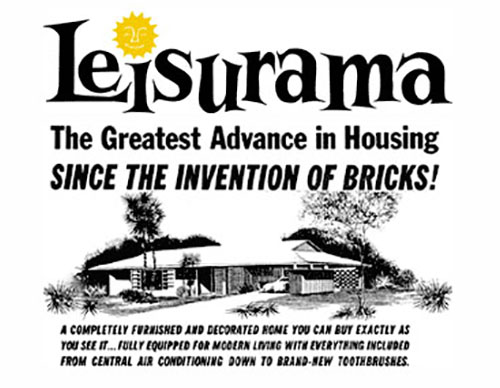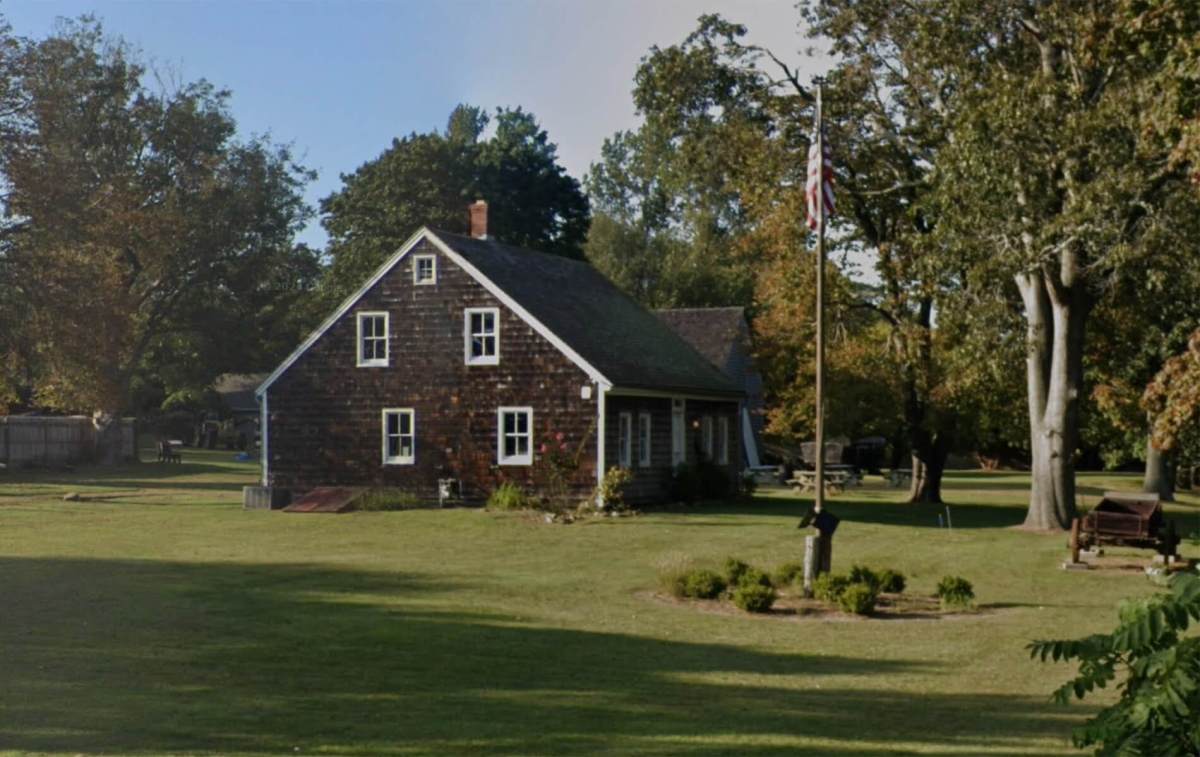“If you’ve ever yearned for your own place-away-from-home, but thought it might cost too much or be a chore to find, furnish and buy…you must come to Macy’s. Come soon…and bring the family with you. They’ll be as excited as you are.”

In 1963, visitors to the ninth floor at Macy’s Herald Square were greeted with a full-size home model. And what a house! It was a stylish modern place for blissful summer vacations right near the beach, and most of all, it was affordable to Macy’s middle class shoppers. As the advertisements said, “Just pick a few colors and start enjoying your new life of leisure.”
And that was it–besides, of course, plunking down $490 and $73 per month after. Everything was included, “ready for your leisure pleasure”: sofas, rugs, tables and chairs, beds, a set of Melmac dishes, curtains, towels, bedlinen, and even toothbrushes for each family member. “No need to shop for furnishings. All you have to do is turn the key in the lock and start living,” as one advertisement advised. Macy’s realized that the all-inclusive pricing was soothing to the middle class, who would otherwise worry about the cost of fitting out their new home. The houses included heat and insulation, unlike some summer cottages of the time, so that the buyers could easily obtain financing, which would be hard to get for a strictly summer home.

Leisurama model homes were also displayed at the 1964 World’s Fair, at Macy’s Roosevelt Field on Long Island, and in Montauk on the plaza.
The houses sold out quickly. 200 were built during phase one of the project, and 600 more were planned. “We could have sold 800 houses,” said Montauk real estate broker Frank Tuma, quoted in Newsday in 1999. “All you needed were your clothes and a six-pack.”
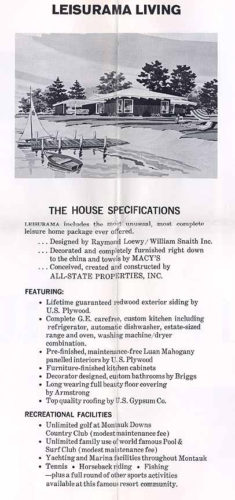
The houses weren’t particularly groundbreaking in design, despite the project architect being Andrew Geller, known for playful summer houses, and the design company Raymond Loewy, but then, middle class families weren’t interested in the latest architectural fad. They wanted a simple, carefree spot to relax with their kids, and that’s what Leisurama offered.
The builder was All-State Properties, run by Herbert Sadkin, who had earlier had Geller design the prototypical all-electric GE kitchen used in Leisurama for the American National Exhibition in Moscow, 1959. This exhibit prompted the famous kitchen debate between Soviet Premier Khrushchev and Vice President Richard Nixon, where Khrushchev scoffed at the fancy kitchen gadgets on show. In a photo printed in the New York Times, Herbert Sadkin is standing next to Khrushchev, Nixon, and Leonid Brezhnev.
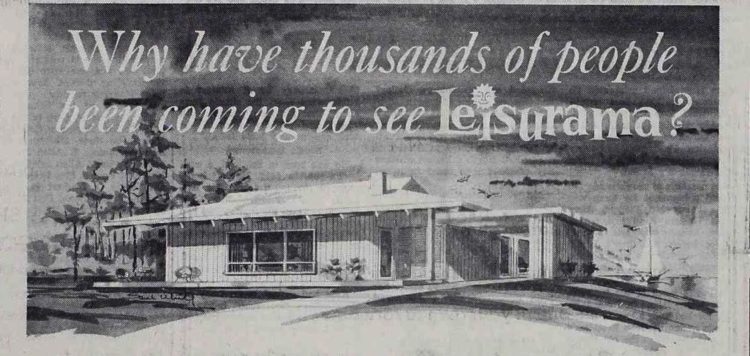
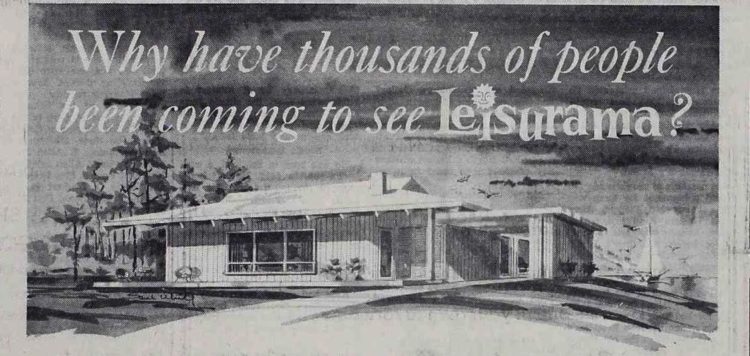
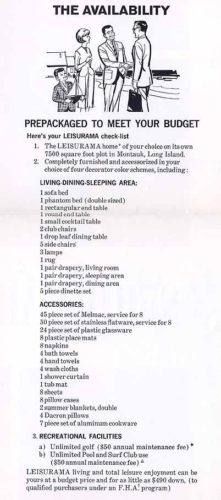
All-State Properties offered two models: the Convertible, which sold for $13,490, was basically a glorified studio with a Murphy bed. The ads said, “It has only 775 square feet of space, yet it sleeps four – two in a bedroom above, two on a sofa bed in the living room.” Cozy! A folding screen divided the “living room” from the “study.”
The 950 square feet Expanded Convertible cost $16,990. It “sleeps eight, with two bedrooms and a half-bathroom added to the basic Convertible floor plan.” Another plan, the Villa, was even larger at 1200 square feet, but proved unpopular so only four were built.
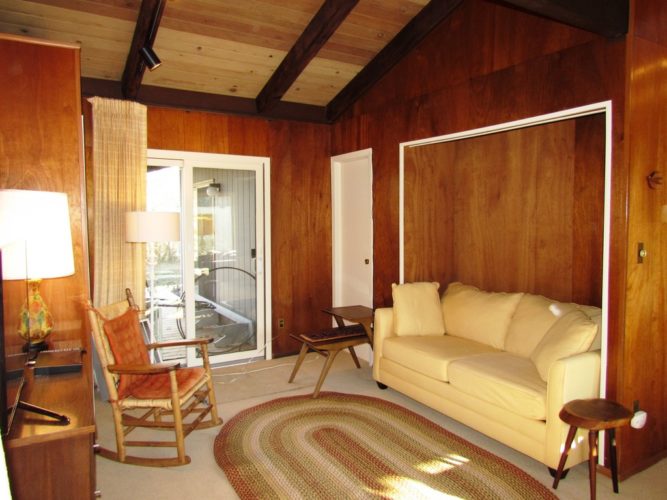
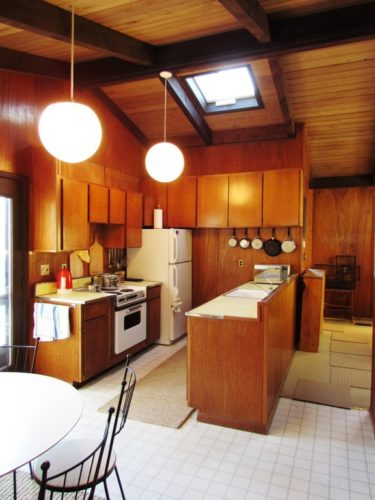
However, in the end, the project was a failure, despite the clever marketing and names like Macy’s and Raymond Loewy involved. It was simply unprofitable: land values rose unexpectedly, there were problems with the septic systems, and All-State Properties went bankrupt in 1964. Macy’s then continued the project until all the houses were finished and furnished.
Most Leisuramas today sell for between $800-900K today. According to the US consumer price index, $16990 in 1963 has the same purchasing power as $139,000 in 2018. So all in all, they proved to be a good investment.

